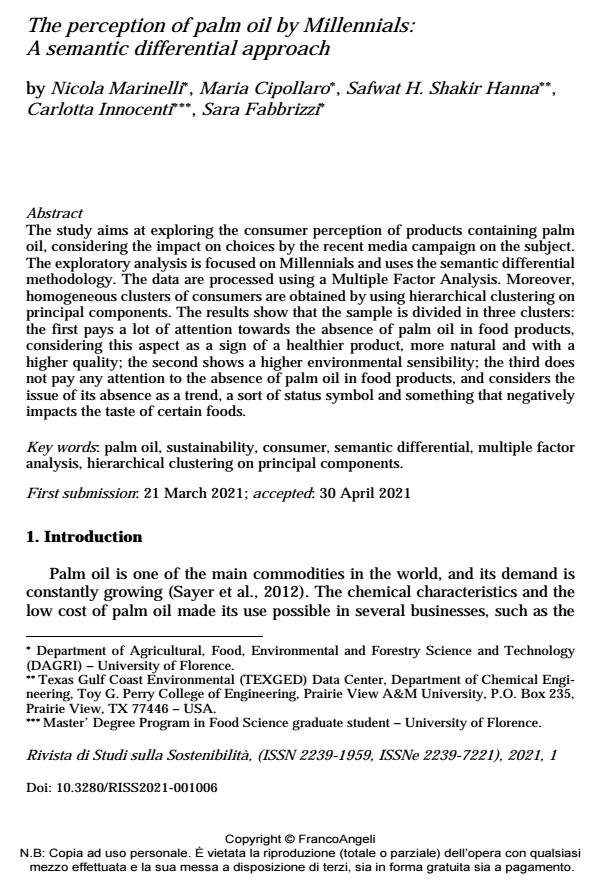The perception of palm oil by Millennials: A semantic differential approach
Journal title RIVISTA DI STUDI SULLA SOSTENIBILITA'
Author/s Nicola Marinelli, Maria Cipollaro, Safwat H. Shakir Hanna, Carlotta Innocenti, Sara Fabbrizzi
Publishing Year 2021 Issue 2021/1
Language English Pages 17 P. 93-109 File size 258 KB
DOI 10.3280/RISS2021-001006
DOI is like a bar code for intellectual property: to have more infomation
click here
Below, you can see the article first page
If you want to buy this article in PDF format, you can do it, following the instructions to buy download credits

FrancoAngeli is member of Publishers International Linking Association, Inc (PILA), a not-for-profit association which run the CrossRef service enabling links to and from online scholarly content.
The study aims at exploring the consumer perception of products containing palm oil, considering the impact on choices by the recent media campaign on the sub-ject. The exploratory analysis is focused on Millennials and uses the semantic dif-ferential methodology. The data are processed using a Multiple Factor Analysis. Moreover, homogeneous clusters of consumers are obtained by using hierarchical clustering on principal components. The results show that the sample is divided in three clusters: the first pays a lot of attention towards the absence of palm oil in food products, considering this aspect as a sign of a healthier product, more natu-ral and with a higher quality; the second shows a higher environmental sensibility; the third does not pay any attention to the absence of palm oil in food products, and considers the issue of its absence as a trend, a sort of status symbol and some-thing that negatively impacts the taste of certain foods.
Keywords: palm oil, sustainability, consumer, semantic differential, multiple fac-tor analysis, hierarchical clustering on principal components.
Nicola Marinelli, Maria Cipollaro, Safwat H. Shakir Hanna, Carlotta Innocenti, Sara Fabbrizzi, The perception of palm oil by Millennials: A semantic differential approach in "RIVISTA DI STUDI SULLA SOSTENIBILITA'" 1/2021, pp 93-109, DOI: 10.3280/RISS2021-001006